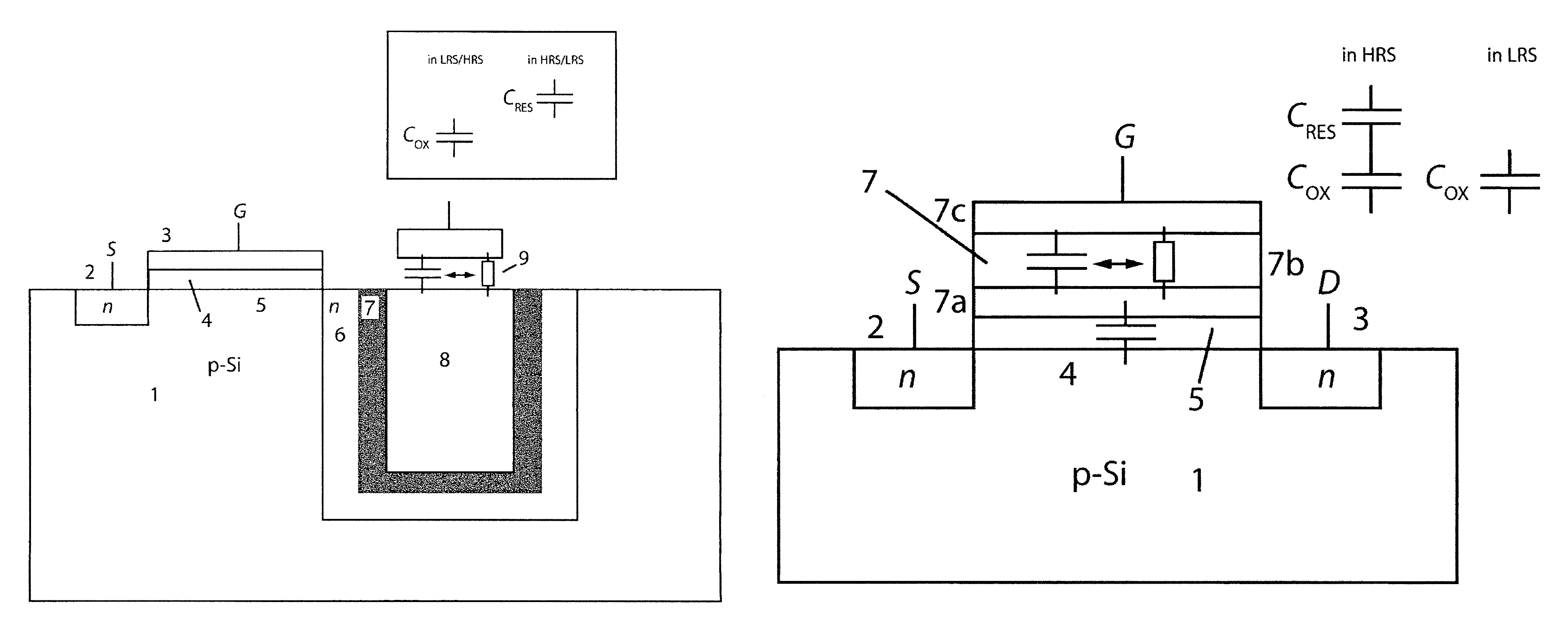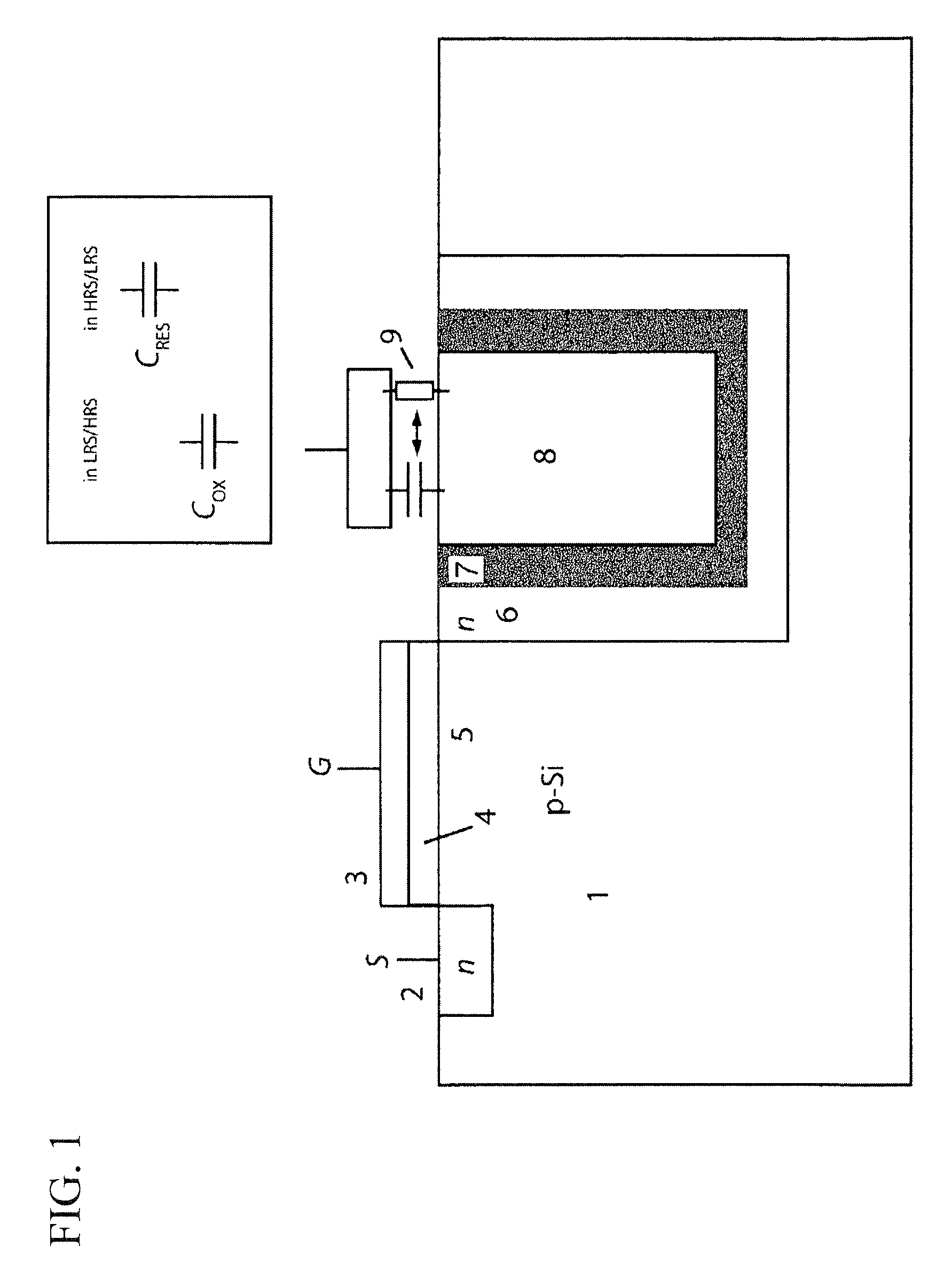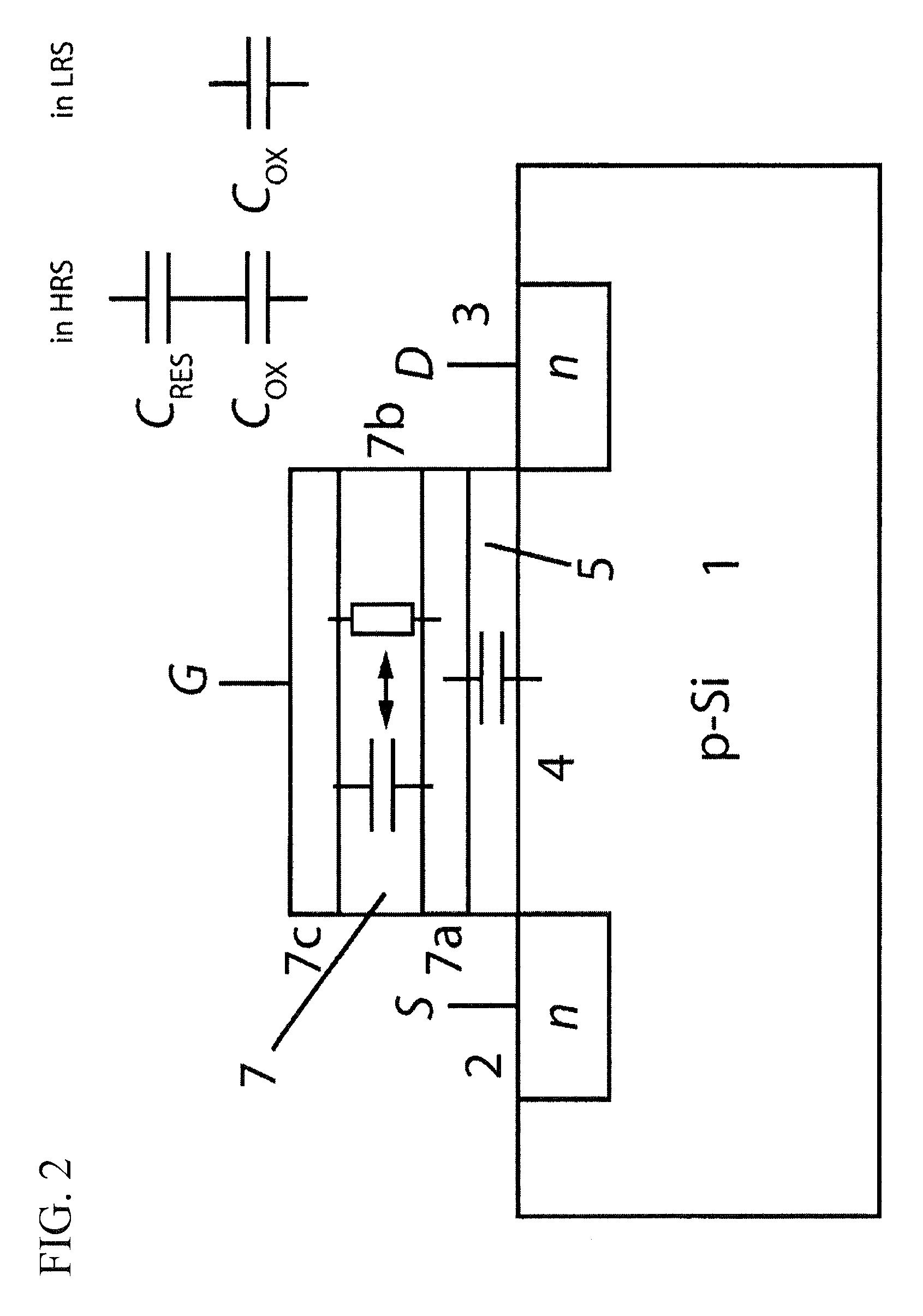Method for capacitively reading resistive memory elements and nonvolatile, capacitively readable memory elements for implementing the method
a capacitively readable, memory element technology, applied in information storage, static storage, digital storage, etc., can solve the problem of limiting the maximum array size that can be implemented, the symmetry of the switching behavior of such memory elements is worsened, and the type of manufacture is technologically very complex, etc. problem, to achieve the effect of low leakage current, low leakage current and high leakage curren
- Summary
- Abstract
- Description
- Claims
- Application Information
AI Technical Summary
Benefits of technology
Problems solved by technology
Method used
Image
Examples
Embodiment Construction
[0045]FIG. 1 schematically shows the composition of a memory element according to the invention, which was implemented as a series connection of a DRAM memory cell with a resistive memory cell. The transistor of the DRAM cell comprising an n-doped source region 2, a gate 3 that is insulated by a gate dielectric 4 from the p-doped channel 5, and an n-doped drain region 6 is introduced into a substrate 1 made of p-doped silicon. So as to produce the drain region 6, initially a trench was introduced into the substrate 1, and the wall of this trench was subsequently n-doped. When a voltage is applied between the source 2 and the gate 3, the channel 5 becomes n-conducting, which activates the transistor.
[0046]SiO2, which may also be replaced by another dielectric, was applied as the dielectric 7 to the trench wall forming the drain region 6. The trench was then filled with n-doped silicon 8, which may also be replaced by a metal. This silicon 8 and the drain region 6 constitute the plate...
PUM
 Login to View More
Login to View More Abstract
Description
Claims
Application Information
 Login to View More
Login to View More - R&D
- Intellectual Property
- Life Sciences
- Materials
- Tech Scout
- Unparalleled Data Quality
- Higher Quality Content
- 60% Fewer Hallucinations
Browse by: Latest US Patents, China's latest patents, Technical Efficacy Thesaurus, Application Domain, Technology Topic, Popular Technical Reports.
© 2025 PatSnap. All rights reserved.Legal|Privacy policy|Modern Slavery Act Transparency Statement|Sitemap|About US| Contact US: help@patsnap.com



